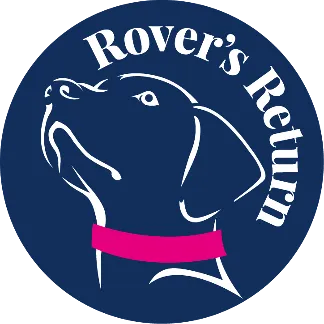Book a FREE 1:1 Assessment Call By Clicking HERE
Specialising In Dog Reactive Behviour
Accredited by APDT, ABTC and UK DOG Behaviour and Training Charter
Qualified and Experienced
Force Free Trainer and Behaviourist
Dog Training Leicestershire Educational Blogs

How to Teach Your Dog to Behave Well: Essential Dog Training Tips

How To Teach Your Dog How To Behave Well
Introduction
Every dog owner dreams of having a well-behaved dog. A pet that listens and behaves. A dog that is not only a joy to have around but also makes your life much easier.
Achieving this requires time, patience, and dog training tips from a qualified dog trainer.
This blog post will guide you on how to teach your dog to behave well using proven strategies.
Understanding Dog Behaviour is Important in Determining What They Are Communicating To You.
I don’t use AI to write my blogs, but I do use it to aid my writing style, because let's face it, I'm not a writer. Once the format is written I then add my ideas and flair to the content. One of the reasons I don't rely on AI is because the content can be outdated. This is what AI came up with for this blog!
'Before diving into the training process, it's essential to understand your dog's behaviour. Dogs are pack animals by nature and look up to their owners as their pack leaders. They need guidance and direction from their leaders to know how they should behave'.

Science tell us that dogs do not see us as pack leaders.
Essentially dogs are no longer regarded as ‘pack animals’ but they are social animals and can become lonely when isolated. They live happily in a human home but don’t see us as their ‘pack’. Dogs in countries where they roam freely don’t live and hunt in packs because it doesn’t work for them. To increase their survival rate they seek their food sources alone
They do not need us to guide them as their leaders, they need to be taught, by using reward-based methods how we want them to behave as well as understanding their instinctual behaviour and needs.
Dogs think and communicate differently than humans. They use body language and vocalise with barking, whining, or growling to express their feelings or needs. Understanding these signals can help you address any issues that may develop.
Your dog’s behaviour is influenced by several factors. Each breed has its unique traits and characteristics that influence its behaviour. Past learning experiences, diet, pain, owner influence, rest and sleep patterns all need to be taken into account when looking at your dog's behaviour.
Check out more information about our dog behaviour programs
For instance, some dogs are naturally more energetic than others and may require more exercise or mental stimulation some are bred to be lap dogs and probably don’t want to walk very far.

What Should I Teach My Dog?
One of the first steps towards having a well-behaved dog is teaching what behaviours we want to see happen again and again. Rewarding these behaviours when the dog does them and not just when we tell them to do it will develop these behaviours and create a confident dog.
Teaching focus and calmness is essential for great behaviour, things that you want to see grow such as the ability to not run off to other dogs, recall, loose lead walking and listening all rely on a dog that is calm enough to focus and listen in all situations. So instead of just teaching your dog to come when called back, or feeding for walking by your side, you also have to ensure that your dog doesn’t become too stimulated by the environment, adequate rest and better focus. In teaching this you will have a dog that hangs with you and doesn’t run off.
Teach one exercise at a time. Use treats or toys as rewards whenever your dog successfully behaves or does something good.
Be consistent with your words and gestures so that your pet can easily associate them with the desired action. Rehearsal is the mother of skill!
Patience is key when teaching your dog. Some dogs may catch on quickly while others may take some time. Don't rush the process; make it a fun and rewarding experience for your pet.
Check out our dog training classess
Be Consistent in Your Dog Training
Consistency is crucial in dog training. Dogs learn through repetition and consistency. If you want your dog to understand and learn, you must be consistent in reinforcing the behaviour.
Ensure everyone in the household is on the same page regarding training.
Mixed signals can confuse your pet and hinder their learning process.
This paragraph, came up in the AI feed
'Moreover, maintain a consistent daily routine for feeding, exercising, and sleeping. Dogs thrive on routine as it gives them a sense of security and helps them understand what is expected of them at different times of the day'.
There are some things that you want to keep to a routine, rest being one of them. If you get into the habit that after a walk, rest time with a long-lasting chew, you will incorporate calmness.
If you set food and walks daily at a specific time, you can inadvertently create arousal as the dog begins to predict walk and food times they become more and more excited before they happen and suddenly your dog is overstimulated.
Positive Reinforcement Or Reward Based Training Are The Same Thing.
Positive reinforcement is one of the most effective dog training tips. It involves rewarding good behaviour to encourage its repetition. Rewards can be treats, toys, praise, or anything else that your dog finds enjoyable.
Whenever your dog behaves well or does as you ask of them, reward them with their favourite treat or praise them enthusiastically. This will help them associate good behaviour with positive outcomes.
Avoid punishing your dog for bad behaviour as it can lead to fear or aggression. The best way to avoid unwanted behaviour is to teach an alternative. To avoid jumping up, teach to the mat when people come into the home, or have them on lead to prevent rehearsal and they must sit and remain sitting before people come toward them. Start early as once it is established it is harder to train out!
Remember it is easier to train an alternative behaviour than stop an established behaviour.
Ignoring behaviour rarely works. The dog will likely increase performing the behaviour as it previously worked, or try something different (could be a worse behaviour) to achieve their goal. Ask yourself why they are doing it then work toward something else.

Conclusion
Teaching your dog to behave well is a manageable task. With an understanding of dog behaviour, consistency in training, and teaching using positive reinforcement techniques; you can effectively guide your furry friend towards becoming a well-behaved companion.
Remember that every dog is unique and what works for one might not work for another. Therefore, be patient and willing to adapt your approach based on your pet's personality and response to training.
A well-behaved dog is about building a strong bond based on mutual respect and understanding. So, start implementing these dog training tips today and enjoy a harmonious relationship with your four-legged friend.
Highly Qualified Behaviourist
Accredited by APDT, ABTC and UK DOG Behaviour and Training Charter
Accredited Scentwork Instructor
Force Free Trainer and Behaviour
Force Free Trainer and Behaviour
Accredited Scentwork Instructor
Accredited by APDT, ABTC and UK DOG Behaviour and Training Charter
Highly Qualified Behaviourist
Contact Us
Sam: 07725 802995
You can contact us via Live Chat button at the bottom of the screen or the contact box to the right.
You can also book one of our services online using the View Dates buttons under the service you require.
© 2023 by Rovers Return Dog Trainers Academy - Force Free Dog Training Lutterworth, Broughton Astley, Leicestershire, Hinckley, Nuneaton, Stoney Stanton, South Kilworth, Ullesthorpe
Privacy Policy | Terms and Conditions | Terms and Conditions of Services | Sitemap


Facebook
Instagram
X
LinkedIn
Youtube
TikTok